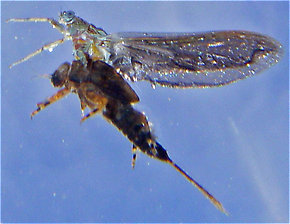Blog & Latest Updates
Fly Fishing Articles
Insects by Common Name


> > The East Branch of the Delaware River
Landscape & scenery photos from the East Branch of the Delaware River
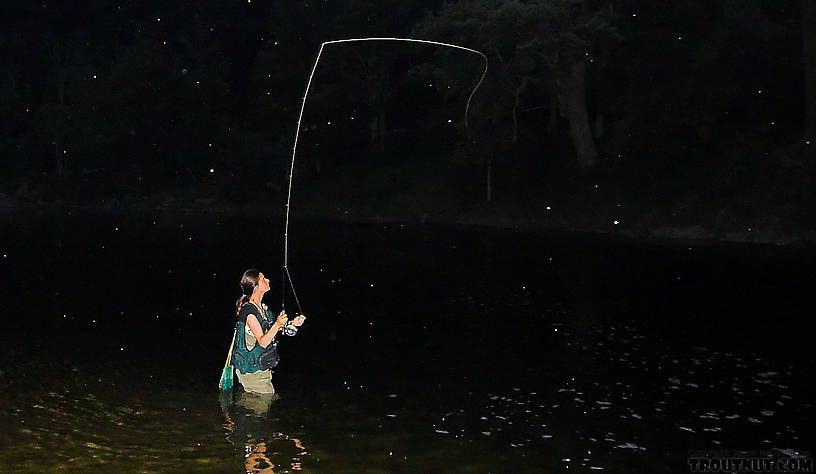
My girlfriend casts amidst a mix of bugs hatching in mid-July from a Catskill stream.
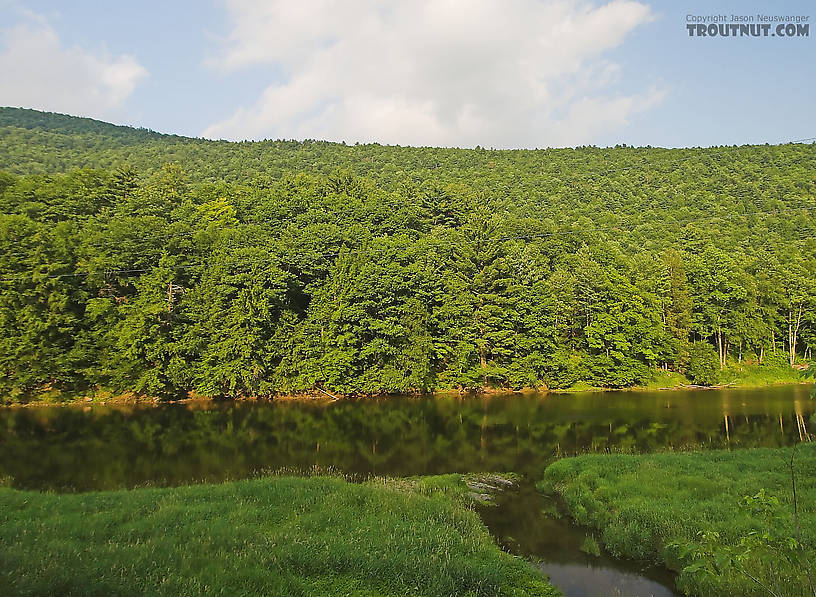
A large, slow Catskill trout river meanders in the shadow of a mountain.
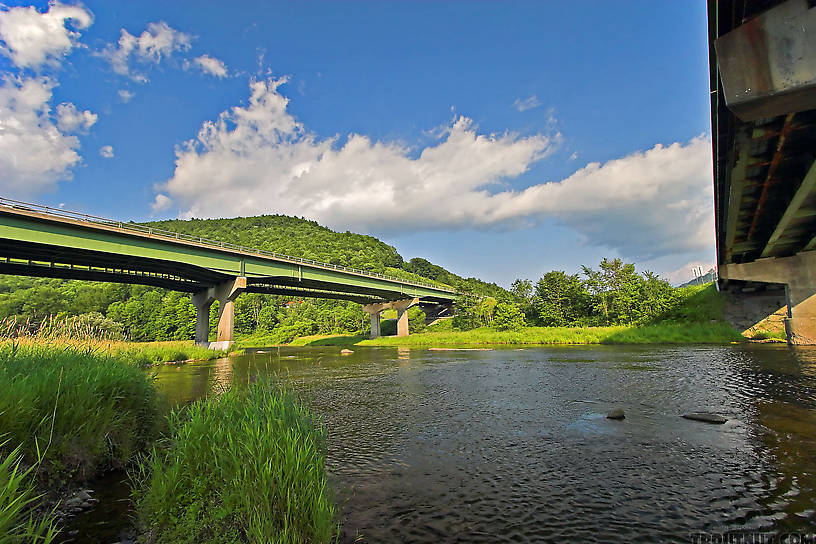
Underwater photos from the East Branch of the Delaware River
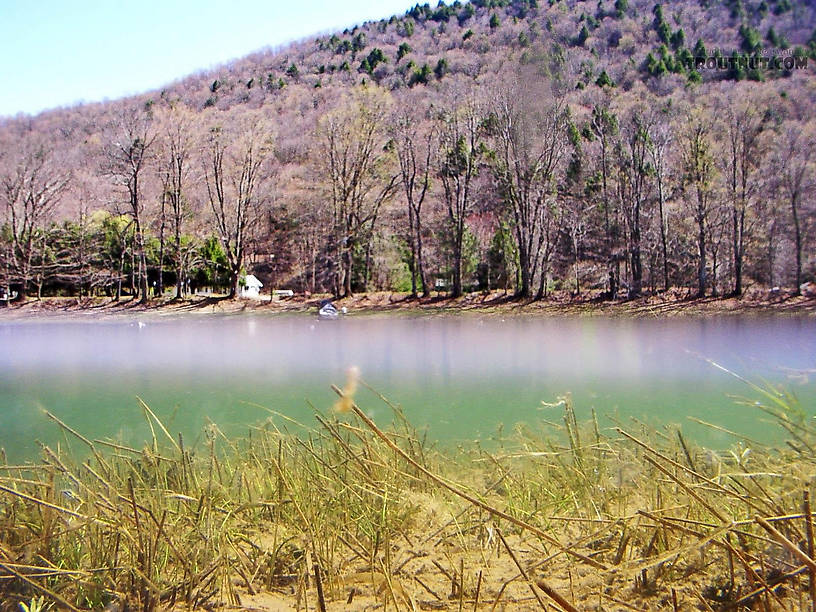
I love this "above & below" landscape from a popular Catskill trout stream. The picture is not doctored to show both perspectives. Instead, my Pentax Optio WPi digital camera is able to take pictures with the tiny lens half-in, half-out of the water.
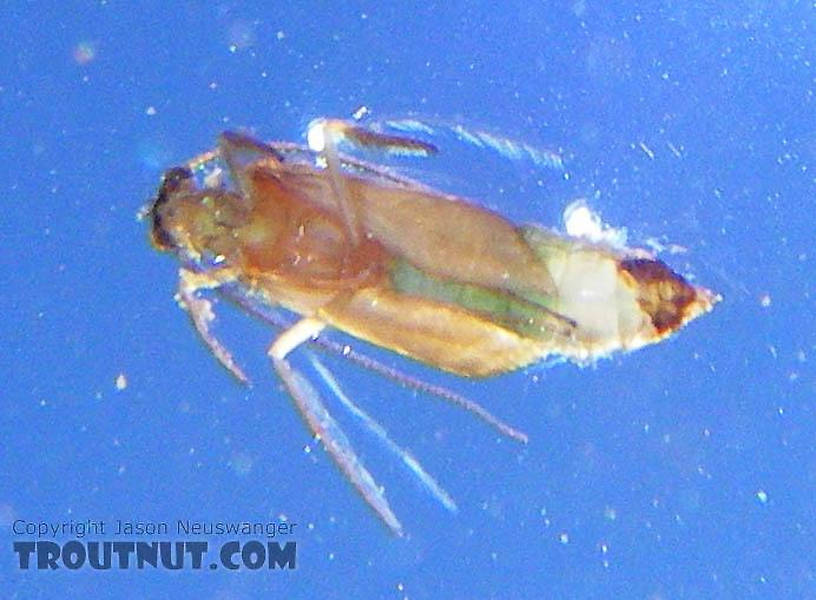
A Brachycentrus "Apple Caddis" pupa scoots around in the surface film. Apparently it had some difficulty emerging, so I was able to slip my camera underneath it and take a picture from below.
In this picture: Caddisfly Species Brachycentrus appalachia (Apple Caddis).
In this picture: Caddisfly Species Brachycentrus appalachia (Apple Caddis).
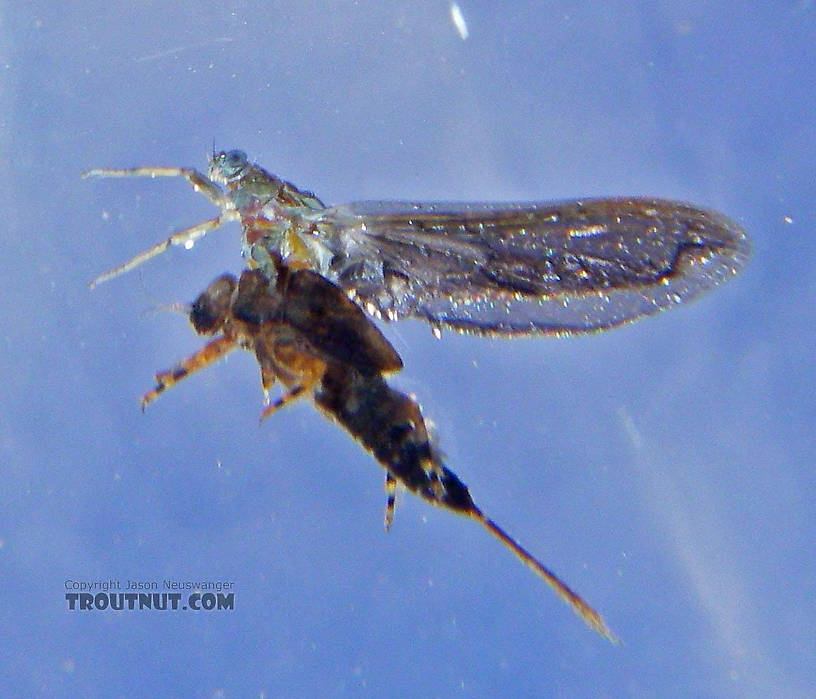
This is a close-up underwater view of a stillborn (Stillborn: In fly fishing, a stillborn insect is one which got stuck in its nymphal or pupal shuck during emergence and floats helplessly on the surface instead of flying away. It is a specific class of cripple, although it is sometimes used interchangeably with that term.) Ephemerella subvaria (Henrickson) female dun.
In this picture: Mayfly Species Ephemerella subvaria (Hendrickson).
In this picture: Mayfly Species Ephemerella subvaria (Hendrickson).
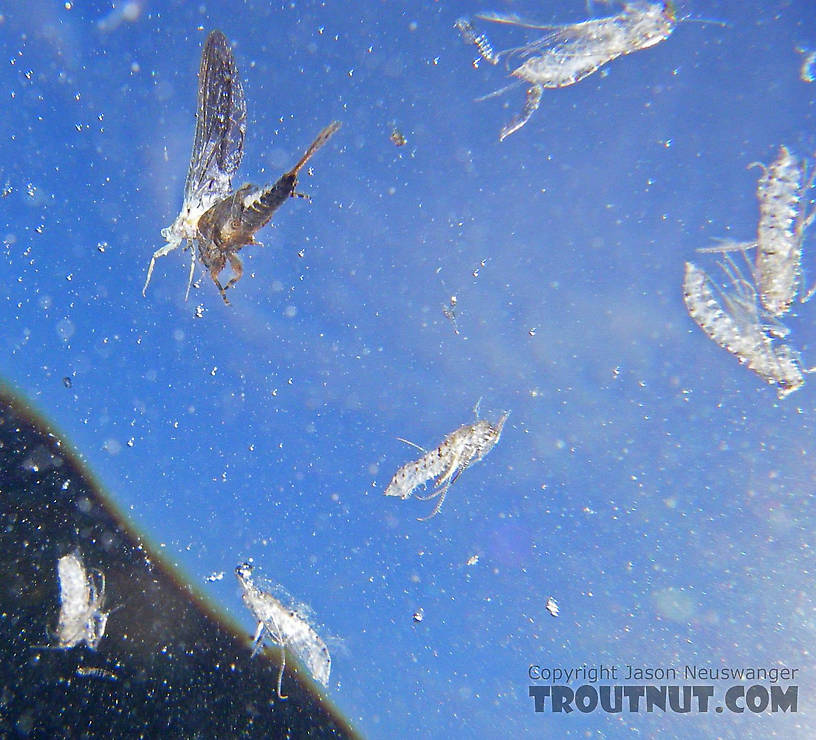
This picture from below shows a stillborn (Stillborn: In fly fishing, a stillborn insect is one which got stuck in its nymphal or pupal shuck during emergence and floats helplessly on the surface instead of flying away. It is a specific class of cripple, although it is sometimes used interchangeably with that term.) Ephemerella subvaria (Hendrickson) dun drifting on the surface amidst a number of shed pupal skins from Brachycentrus caddisflies which were heavily hatching that day.
In this picture: Caddisfly Species Brachycentrus appalachia (Apple Caddis) and Mayfly Species Ephemerella subvaria (Hendrickson).
In this picture: Caddisfly Species Brachycentrus appalachia (Apple Caddis) and Mayfly Species Ephemerella subvaria (Hendrickson).
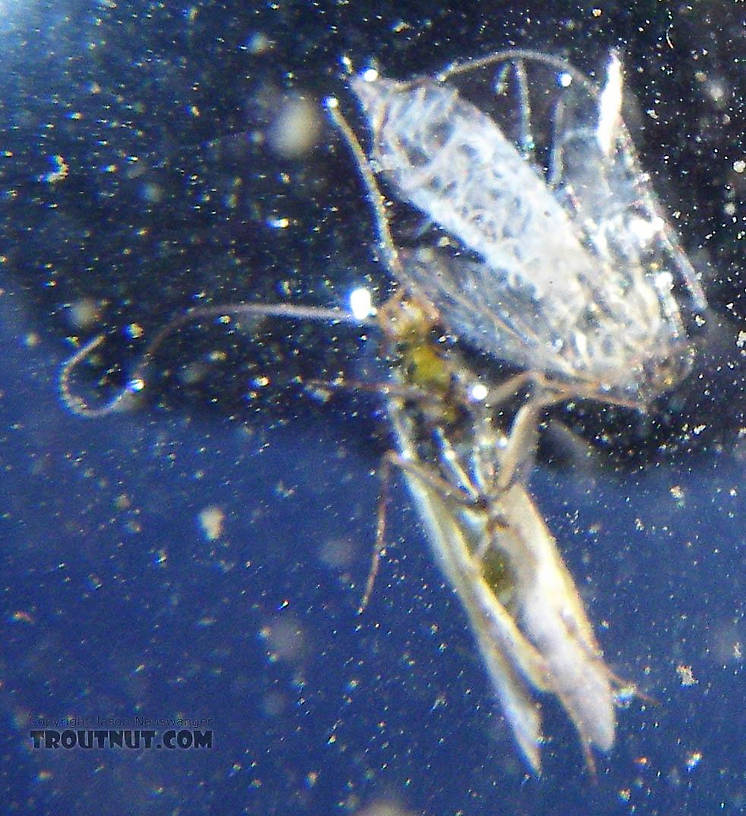
This Brachycentrus "Apple Caddis" struggled more than its kin in escaping its pupal skin, enabling me to take an underwater picture of it from directly below. This is sort of a trout's eye view, but I used the flash for the picture so the transparent shuck (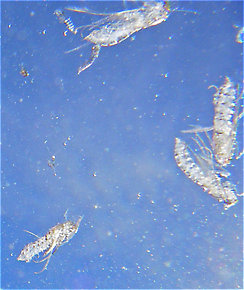 Shuck: The shed exoskeleton left over when an insect molts into its next stage or instar. Most often it describes the last nymphal or pupal skin exited during emergence into a winged adult.) appears far brighter than it really is.
Shuck: The shed exoskeleton left over when an insect molts into its next stage or instar. Most often it describes the last nymphal or pupal skin exited during emergence into a winged adult.) appears far brighter than it really is.
In this picture: Caddisfly Species Brachycentrus appalachia (Apple Caddis).

Here's an underwater view of the pupal shucks of several already-emerged Brachycentrus numerosus caddisflies.
In this picture: Caddisfly Species Brachycentrus appalachia (Apple Caddis).
Closeup insects from the East Branch of the Delaware River
Male Nixe inconspicua Mayfly Dun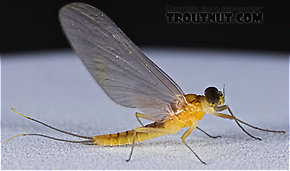 View 13 PicturesThis pretty little dun was part of a sparse midsummer evening hatch on a large Catskill river.
View 13 PicturesThis pretty little dun was part of a sparse midsummer evening hatch on a large Catskill river.
I could not identify it by following a species key step by step, but I tentatively keyed it to the genus Nixe, and based on distribution maps and physical descriptions the most likely species is Nixe inconspicua.
 View 13 PicturesThis pretty little dun was part of a sparse midsummer evening hatch on a large Catskill river.
View 13 PicturesThis pretty little dun was part of a sparse midsummer evening hatch on a large Catskill river.I could not identify it by following a species key step by step, but I tentatively keyed it to the genus Nixe, and based on distribution maps and physical descriptions the most likely species is Nixe inconspicua.
Collected July 13, 2005 from the East Branch of the Delaware River in New York
Added to Troutnut.com by Troutnut on April 14, 2006
Added to Troutnut.com by Troutnut on April 14, 2006
Male Paraleptophlebia (Blue Quills and Mahogany Duns) Mayfly Spinner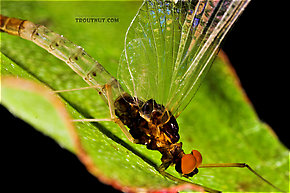 View 15 PicturesI wasn't actually fishing the river where I caught this one. I was just scouting, didn't like the look of the water, and as I was walking back to the car this little dun landed on my vest. Why can't they all be so easy to collect?
View 15 PicturesI wasn't actually fishing the river where I caught this one. I was just scouting, didn't like the look of the water, and as I was walking back to the car this little dun landed on my vest. Why can't they all be so easy to collect?
 View 15 PicturesI wasn't actually fishing the river where I caught this one. I was just scouting, didn't like the look of the water, and as I was walking back to the car this little dun landed on my vest. Why can't they all be so easy to collect?
View 15 PicturesI wasn't actually fishing the river where I caught this one. I was just scouting, didn't like the look of the water, and as I was walking back to the car this little dun landed on my vest. Why can't they all be so easy to collect?Collected September 8, 2006 from the East Branch of the Delaware River in New York
Added to Troutnut.com by Troutnut on October 4, 2006
Added to Troutnut.com by Troutnut on October 4, 2006
Female Stenacron (Light Cahills) Mayfly Spinner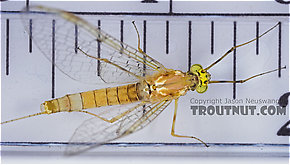 View 4 Pictures
View 4 Pictures
 View 4 Pictures
View 4 PicturesCollected July 13, 2005 from the East Branch of the Delaware River in New York
Added to Troutnut.com by Troutnut on April 14, 2006
Added to Troutnut.com by Troutnut on April 14, 2006
Recent Discussions of the East Branch of the Delaware River
Possible Didymo in the East Branch of the Delaware 12 Replies »
Posted by Softhackle on Sep 28, 2007
Last reply on Jul 15, 2015 by AFISHN
I have seen some reports that the Didymo algae has been found, now, in the East Branch of the Delaware near East Branch, NY. The potential for spreading this "rock snot" as it is called is very high. The problem is it kills off insect populations because it smothers the stream and river beds. For more information regarding Didymo, look here:
Didymo
Mark
ReplyDidymo
Mark
Start a Discussion of the East Branch of the Delaware River:
Top 10 Fly Hatches
Top Gift Shop Designs
Eat mayflies.
Top Insect Specimens
Miscellaneous Sites
Troutnut.com is copyright © 2004-2024 Jason
Neuswanger (email Jason). See my FAQ for information about use of my images.
 privacy policy
privacy policy

